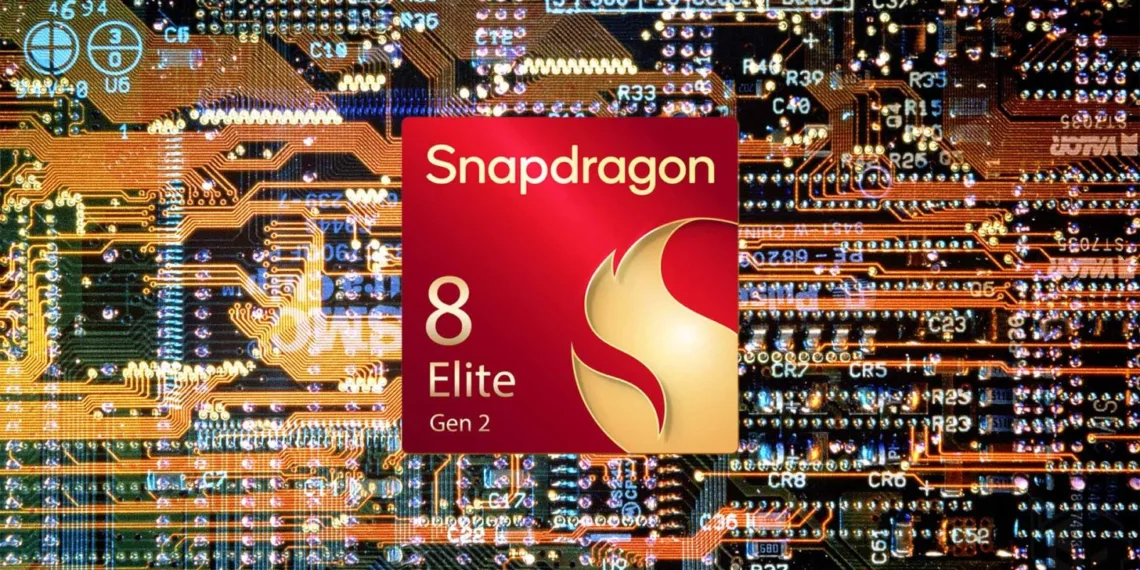Discover the game-changing features of Qualcomm’s Snapdragon 8 Elite Gen 2. Learn about LPDDR6 support, increased cache, and performance boosts.
Table of Contents

Qualcomm’s Snapdragon 8 Elite Gen 2: A Mobile Powerhouse in the Making
Are you ready for the next leap in mobile processing? Qualcomm is gearing up to redefine smartphone performance with its upcoming Snapdragon 8 Elite Gen 2 chip. Let’s dive into the exciting rumors and potential game-changers this powerhouse SoC might bring to your future device.
Breaking Down the Buzz: What’s New?
- LPDDR6 Support: Speed Meets Efficiency
- First-time support for cutting-edge LPDDR6 RAM
- Backward compatibility with LPDDR5X for flexibility
- Supersized Cache: Boosting the Brain
- GPU cache potentially growing from 12MB to 16MB
- Expected 30% increase in graphics performance
- Next-Gen CPU Architecture: Power at the Core
- Second-generation Oryon CPU cores
- Rumored 25% performance uplift
- Cutting-Edge Manufacturing: Nanometer Nirvana
- TSMC’s advanced 3nm N3P process
- Sharing silicon real estate with Apple’s upcoming A19 chip
The Numbers Game: Snapdragon 8 Elite Gen 2 vs. The Competition
| Feature | Snapdragon 8 Elite Gen 2 (Rumored) | Current Gen | Improvement |
|---|---|---|---|
| GPU Cache | 16MB | 12MB | +33% |
| Graphics Performance | – | – | +30% |
| CPU Performance | – | – | +25% |
| AnTuTu Score | ~3.8 million | ~3 million | +26% |
Why This Matters: The Real-World Impact
- Smoother Gaming: Larger GPU cache means less stuttering and more responsive gameplay.
- AI Powerhouse: Enhanced CPU performance could revolutionize on-device AI capabilities.
- Efficient Multitasking: LPDDR6 support promises faster app switching and improved battery life.
- Future-Proofing: The advanced manufacturing process sets the stage for years of top-tier performance.

FAQs: Your Burning Questions Answered
When can we expect devices with the Snapdragon 8 Elite Gen 2?
Rumors point to an October 2025 unveiling, with devices potentially hitting shelves by the end of the year.
Will all flagship phones use LPDDR6 RAM with this chip?
Not necessarily. Manufacturers will have the option to use either LPDDR5X or LPDDR6, depending on their design goals and price points.
How does the Snapdragon 8 Elite Gen 2 compare to Apple’s chips?
While direct comparisons are tricky, both chips will use TSMC’s 3nm process, setting the stage for an exciting performance showdown.
Will this chip support Wi-Fi 7 or other new connectivity standards?
While not confirmed, it’s highly likely given Qualcomm’s history of including cutting-edge connectivity features in their flagship chips.
How will the increased cache size affect battery life?
Larger caches can potentially improve efficiency by reducing the need to access main memory, which could lead to better battery life in some scenarios.
The Road Ahead: What This Means for Your Next Phone
The Snapdragon 8 Elite Gen 2 isn’t just another incremental update – it’s shaping up to be a quantum leap in mobile computing. From silky-smooth gaming experiences to AI capabilities that blur the line between phones and dedicated computers, this chip promises to redefine what we expect from our mobile devices.
As we eagerly await official announcements and real-world benchmarks, one thing is clear: the future of mobile technology is looking brighter (and faster) than ever. Whether you’re a mobile gaming enthusiast, a productivity powerhouse, or just someone who appreciates a snappy, responsive device, the Snapdragon 8 Elite Gen 2 is definitely one to watch.








